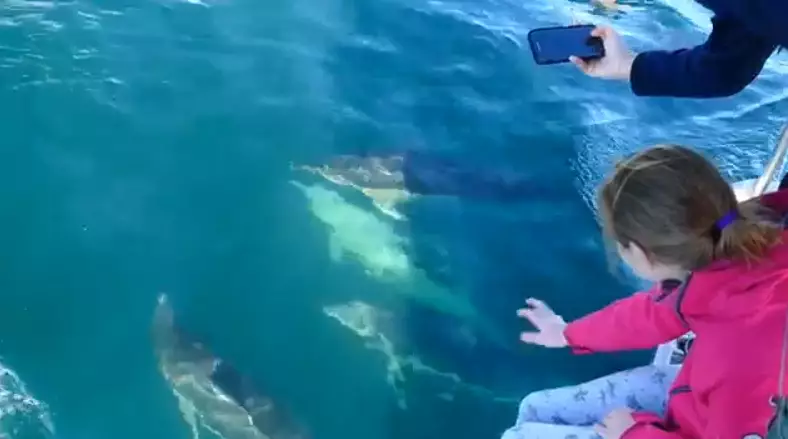
A rare white dolphin has been spotted in Marlborough Sounds, New Zealand.
Advert
The dolphin was swimming alongside a pod of common dolphins, which had decided to show themselves to passengers on a wildlife tour boat in the Queen Charlotte Sound.
Captain Paul Keating - who is chairman of a group called Guardian of the Sounds - said he had never seen a white dolphin in the 33 years he's been at sea.
Keating also runs wildlife company E-Ko Tours in Picton, explained he had first spotted the unusual white dolphin around two weeks ago, but said it had been 'very elusive since'.
He believes it is a member of a pod of around 100 short beaked common dolphin, which have taken up residence in Queen Charlotte Sound.
Advert
The pod has apparently become more trusting of the slow-moving tour boat over time, meaning now tour groups have spotted the dolphin on a few more occasions.
"They're starting to come up to us a lot more, playing with the boat, looking at the people," Keating told Stuff.co.nz.
With the mysterious white dolphin now a regular in the waters, Keating's 11-year-old daughter has even decided to name it 'Ghost'.
Keating reckons, from what they've seen over the course of the few weeks, Ghost has been treated the same as the common dolphins, adding: "He's part of a group, not shunned because of his colour."
Advert
D'aww. That's good to hear.

Keating believes the pod of dolphins may be in the Marlborough Sounds for two-to-three months, and thinks their presence is due to higher ocean temperatures as a result of global warming.
"They are most likely here because they are nurturing the young, new born baby dolphin among the group, waiting until they are large enough to keep up with the pod in ocean hunting mode," he explained.
Advert
"These animals are normally based in the Cook Strait and further up toward Tauranga.
"But we've got warmer winter water temperatures so those animals are coming down, because we've got more food and shelter."
Karen Stockin, associate professor at Massey University, conducted a study on anomalously pigmented common dolphins back in 2005.
She found there was a small percentage of the dolphin population with the condition, and believes that such animals are an example of a 'leucistic' common dolphin - which means it lacks a certain pigmentation, making it all-white.
Advert
"Whilst most typically assume these to be albino, the reality is that without having clarity of the eye pigment or the genetics, we can't say," she said.
Featured Image Credit: E-Ko Tours/YouTubeTopics: World News, News, Animals